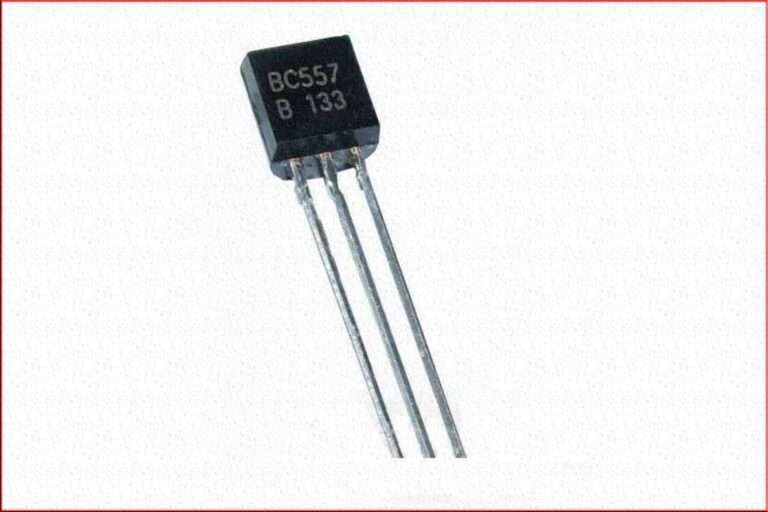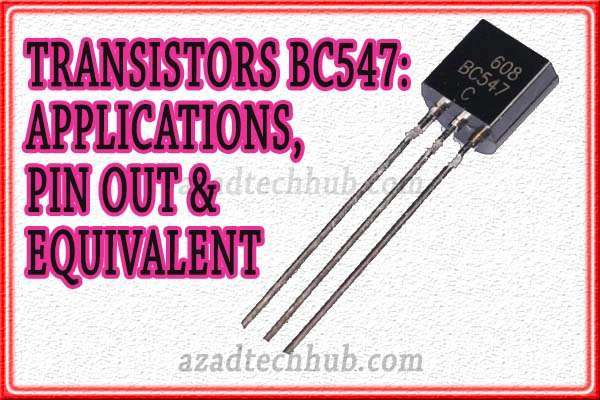74HC595 8-Bit Shift Register: Best Ultimate Guide
Table of Contents
Introduction:
The 74HC595 8-bit shift register, also known as the 74HC595 IC, is a highly versatile integrated circuit widely used in digital electronics. As an essential component in the realm of microcontrollers, the 74HC595 8-bit shift register plays a crucial role in expanding the number of output pins and facilitating seamless data shifting operations. Its popularity stems from its ability to shift data in and out effortlessly, making it a preferred choice for electronics enthusiasts and professionals alike.

In this comprehensive guide, we will delve into the inner workings and functionalities of the 74HC595 8-bit shift register. By understanding its key features, working principles, and potential applications, you will gain a solid foundation to harness the full potential of this remarkable IC.
Let’s explore the world of the 74HC595 8-bit shift register together, from its inception to its remarkable capabilities and the possibilities it opens up for digital design and microcontroller-based projects.
Overview of the 74HC595 8-Bit Shift Register
The 74HC595 8-bit shift register is a highly versatile integrated circuit that belongs to the 74HC series, a family of ICs widely used in digital logic applications. Specifically, the 74HC595 is designed as an 8-bit serial-in, parallel-out shift register. Its primary function is to store and shift 8 bits of data in a serial manner while outputting the data in parallel format.
The 74HC595 comprises three main components: an 8-bit shift register, an 8-bit latch, and 8 output pins. The shift register sequentially stores the incoming serial data bits, while the latch holds the data in parallel until it is ready to be outputted. The output pins allow the data to be accessed and used to control various devices such as LEDs, transistors, or relays.
One of the notable advantages of the 74HC595 8-bit shift register is its simplicity of operation. It utilizes a straightforward serial communication protocol, making it easy to interface with microcontrollers like Arduino boards. By providing clock signals to control the shifting process and latch signals to store the data in parallel, the 74HC595 enables efficient data manipulation and output updates.
Furthermore, the 74HC595 offers cascading capabilities, allowing multiple ICs to be connected together to create longer shift registers. This feature expands the number of available output pins, making it ideal for applications that require a higher number of control signals.
The 74HC595 8-bit shift register is a versatile IC that serves as a valuable tool in digital electronics. Its ability to store and shift data serially while outputting it in parallel, coupled with its straightforward interface and cascading capabilities, make it a popular choice for expanding output capabilities and simplifying data manipulation in microcontroller-based projects.
Functional Description of 74HC595 8-Bit Shift Register
The functional description of the 74HC595 8-bit shift register provides a deeper understanding of its operation and how it enables efficient data storage, shifting, and parallel output. Let’s explore its key components and their roles in detail:
8-bit Shift Register: The 74HC595 features an 8-bit shift register, which serves as the core element of the IC. This register consists of eight individual storage locations, each capable of storing a single bit of data. The shift register sequentially stores the incoming serial data bits, one after another.
8-bit Latch: The 74HC595 also includes an 8-bit latch, which holds the data from the shift register in parallel until it is ready to be outputted. The latch ensures that the data remains stable and unchanged during the output phase.
Output Pins: The 74HC595 has 8 output pins, labeled from Q0 to Q7. These pins are connected to the latch and serve as the parallel outputs of the shift register. The stored data can be accessed and utilized to control external devices or components.
Data Flow: The functional flow of the 74HC595 can be summarized as follows:
Serial Data Input (DS): The serial data input (DS) pin is where the incoming data is provided in a serial format. The data is shifted into the first bit of the shift register, Q0, when a clock pulse is received.
Clock Input (SH_CP): The clock input (SH_CP) pin controls the shifting process of the data. With each clock pulse received at this pin, the data within the shift register shifts one bit to the right, allowing new data to enter from the serial data input (DS) pin.
Latch Enable (ST_CP): The latch enable (ST_CP) pin triggers the storage of the shifted data from the shift register to the latch. When a latch signal is sent, the contents of the shift register are transferred to the latch in parallel.
Parallel Output (Q0-Q7): The stored data in the latch is available at the 8 output pins (Q0-Q7). Each output pin represents one bit of the parallel data. These pins can drive external components, such as LEDs, transistors, or relays, to control various functions.
Cascading of 74HC595
One of the notable features of the 74HC595 is its ability to be cascaded. By connecting the output of one 74HC595 to the input of another, multiple ICs can be linked together, effectively creating longer shift registers and expanding the number of available output pins.
The 74HC595 8-bit shift register’s functional description highlights its key components, including the shift register, latch, and output pins. Understanding the flow of data through these components is essential for effectively utilizing the IC in various digital applications. Whether it’s data storage, shifting, or parallel output, the 74HC595 provides a reliable and efficient solution, making it a valuable tool in digital electronics projects.
74HC595 8-Bit Shift Register arduino code
Here’s an example Arduino code to demonstrate how to use the 74HC595 8-bit shift register:
// Pin connections
const int latchPin = 8; // Connects to the latch (ST_CP) pin of 74HC595
const int clockPin = 12; // Connects to the clock (SH_CP) pin of 74HC595
const int dataPin = 11; // Connects to the data (DS) pin of 74HC595
// Function to shift data to the 74HC595
void shiftOutData(byte data) {
digitalWrite(latchPin, LOW); // Set latchPin to LOW before shifting data
// Shift out the 8 bits of data
shiftOut(dataPin, clockPin, MSBFIRST, data);
digitalWrite(latchPin, HIGH); // Set latchPin to HIGH to update outputs
}
void setup() {
// Initialize the necessary pins
pinMode(latchPin, OUTPUT);
pinMode(clockPin, OUTPUT);
pinMode(dataPin, OUTPUT);
}
void loop() {
// Example: Light up LEDs in sequence
// Shift out 1 to light up the first LED
shiftOutData(1);
delay(500);
// Shift out 2 to light up the second LED
shiftOutData(2);
delay(500);
// Shift out 4 to light up the third LED
shiftOutData(4);
delay(500);
// Shift out 8 to light up the fourth LED
shiftOutData(8);
delay(500);
// Shift out 0 to turn off all LEDs
shiftOutData(0);
delay(500);
}In this code, we define the pin connections for the latch, clock, and data pins of the 74HC595. The shiftOutData() function is responsible for shifting the data to the shift register. The setup() function initializes the pins, and the loop() function demonstrates an example of lighting up LEDs connected to the output pins of the 74HC595 in sequence. Each LED is controlled by shifting a specific byte value to the shift register using the shiftOutData() function.
Make sure to connect the appropriate pins of the Arduino board to the corresponding pins of the 74HC595 as per the code. Upload the code to your Arduino board and observe the LEDs connected to the 74HC595 lighting up in sequence.
74HC595 pinout
The pinout of the 74HC595 8-bit shift register is as follows:
Pin Description:
- Q0-Q7 (Pins 15-6): These are the parallel output pins of the 74HC595. Each pin corresponds to one bit of the stored data and can be used to control external devices.
- DS (Pin 14): This is the data input pin. It is used to serially input data into the shift register.
- OE (Pin 13): This is the output enable pin. When this pin is LOW (logic 0), the outputs are enabled, and when it is HIGH (logic 1), the outputs are disabled.
- ST_CP (Pin 12): This is the latch (storage register clock) input pin. It is used to load the parallel data into the output register when triggered.
- SH_CP (Pin 11): This is the clock (shift register clock) input pin. It controls the shifting of data within the shift register.
- MR (Pin 10): This is the master reset input pin. When it is LOW (logic 0), it resets the shift register and clears the output.
- Vcc (Pin 16): This is the positive power supply pin. Connect it to the Vcc voltage level (typically +5V) of your system. GND (Pin 8): This is the ground pin. Connect it to the ground (0V) of your system.
Note: Q7′ (Pin 9) is the complemented output of Q7 and is often left unconnected or connected to the Serial Output of another shift register in a cascaded configuration.
Understanding the pinout of the 74HC595 is essential for proper connection and utilization of the shift register in your electronic circuits.
Conclusion
In conclusion, the 74HC595 8-bit shift register is a highly useful and versatile integrated circuit that serves as a key component in digital electronics projects. Its ability to store and shift data serially while providing parallel output expands the number of available output pins, making it an invaluable tool for interfacing microcontrollers and controlling various devices.
The 74HC595’s straightforward interface and cascading capabilities allow for seamless integration into digital circuits, while its efficient data manipulation and parallel output updating enable smooth operation and control of external components. By utilizing the shift register’s features effectively, digital designers can optimize their microcontroller’s capabilities and enhance the functionality of their projects.
Whether you are a hobbyist, student, or professional, the 74HC595 8-bit shift register offers a reliable and efficient solution for expanding output capabilities, reducing pin constraints, and simplifying data manipulation. With its wide availability, compatibility with microcontrollers like Arduino, and numerous application possibilities, the 74HC595 continues to be a popular choice in the world of digital electronics.
Follow us on LinkedIn”Electrical Insights” to get the latest updates in Electrical Engineering. You can also Follow us LinkedIn to see our latest posts.






I consider something truly interesting about your website so I bookmarked.